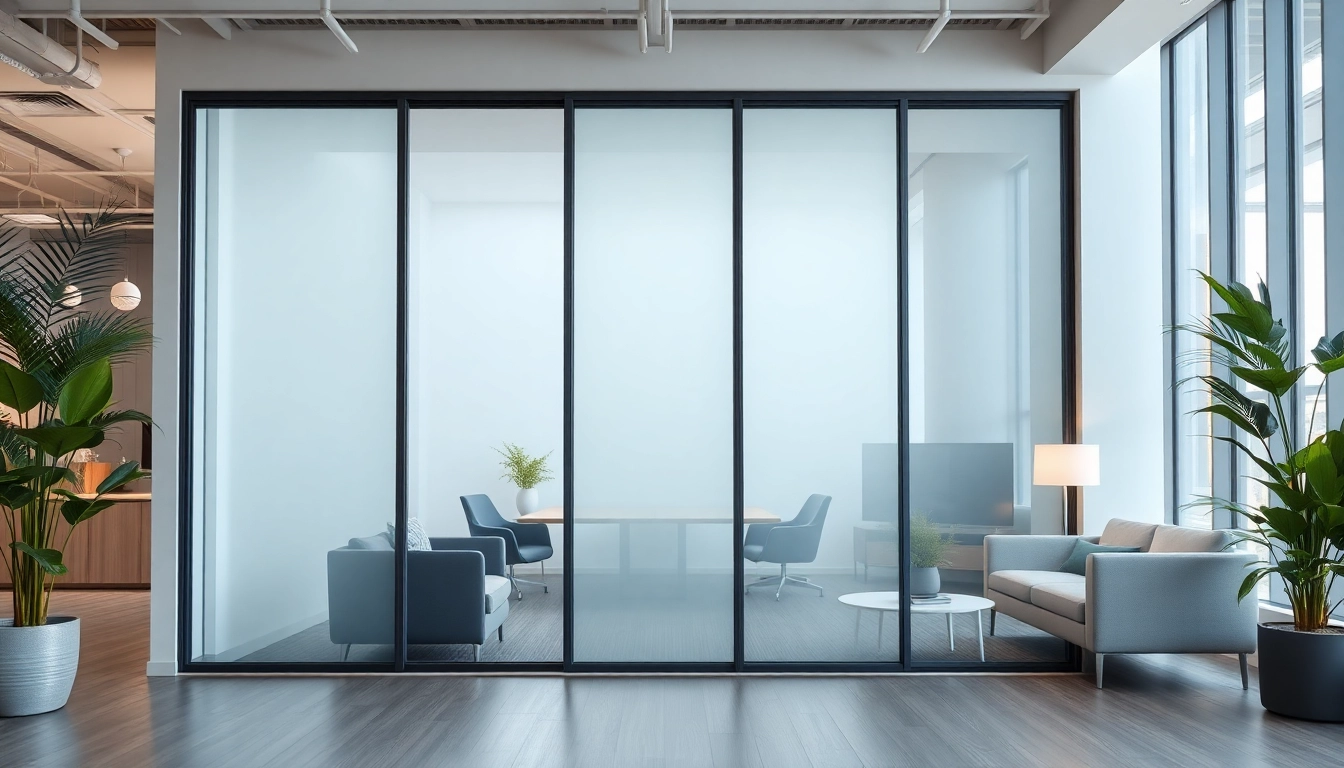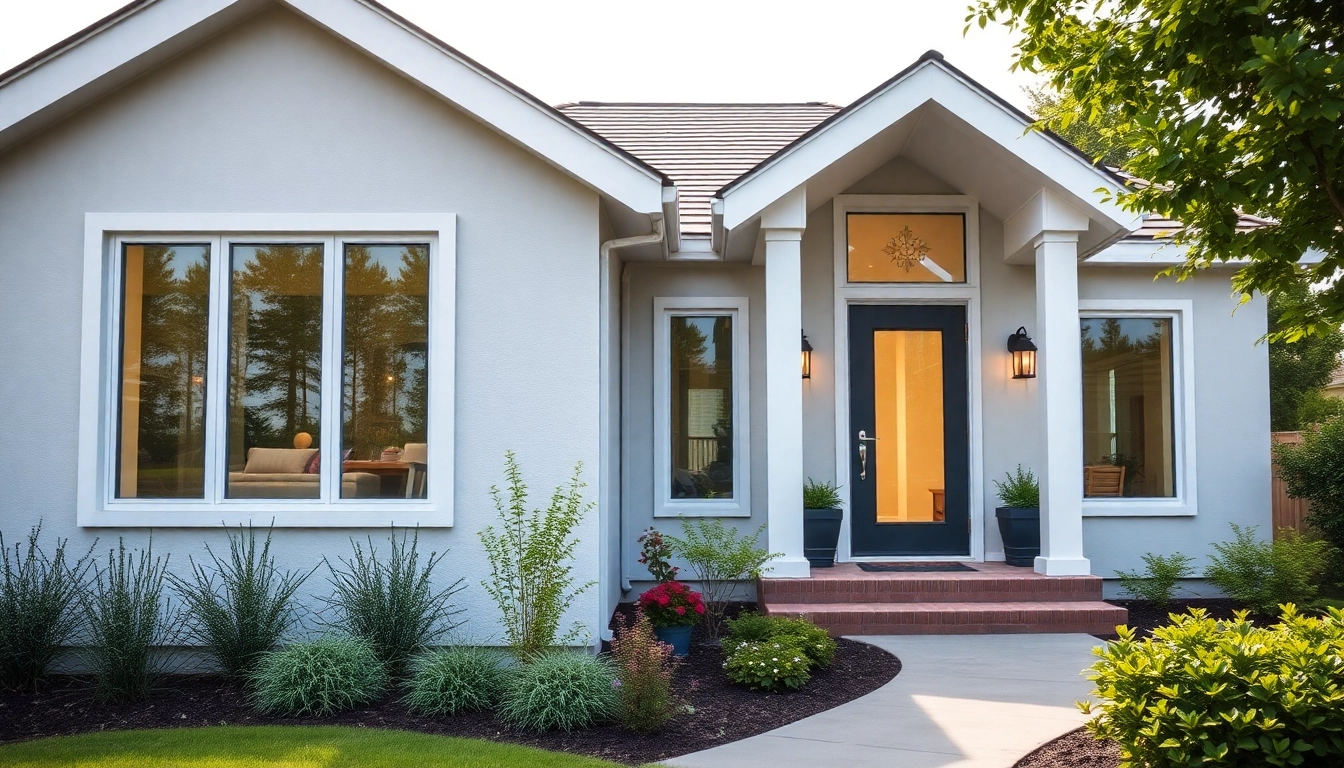Understanding Residential Painting
What is Residential Painting?
Residential painting refers to the service of painting the interiors or exteriors of homes. It encompasses a wide array of tasks, including preparing surfaces, applying various types of paint, and ensuring an aesthetically pleasing finish that suits the homeowner’s vision. Particularly, residential painting plays a crucial role in home improvement and maintenance, helping to enhance the overall appeal and value of a property.
Benefits of Residential Painting
Choosing to invest in residential painting comes with numerous advantages:
- Enhanced Aesthetics: A fresh coat of paint can dramatically improve your home’s exterior and interior appearance, making it more inviting and visually appealing.
- Increased Property Value: Regular painting can contribute to the overall maintenance of your home, thereby increasing its market value.
- Protection from Elements: Quality exterior paints can protect your home from weather-related damage, such as rain, snow, and UV rays.
- Personalization: You have the power to choose colors, finishes, and textures that reflect your personal style and preferences.
- Improved Mood: Colors can affect mood and emotion, and changing your home’s color scheme can create a more positive living environment.
Common Types of Residential Painting Services
The services provided under residential painting can be categorized into several common types:
- Interior Painting: This service focuses on painting the inside of the home, including walls, ceilings, and trim.
- Exterior Painting: This service involves painting the outer surfaces of a home, such as siding, shutters, and doors.
- Cabinet Painting: Transforming kitchen or bathroom cabinets with paint can significantly change the look and feel of these spaces.
- Stucco and Brick Painting: Specialized techniques are required for painting these surfaces, ensuring proper adhesion and appearance.
- Decorative Finishes: This includes techniques like faux finishes, stenciling, or wallpaper that add character to a space.
Choosing the Right Residential Painting Services
Factors to Consider When Hiring Painters
When looking for residential painting services, several factors play a significant role in making the right choice:
- Experience: Look for painters who have a proven track record and experience in handling similar projects.
- Reputation: Check reviews and testimonials from previous clients to gauge their satisfaction and quality of work.
- Services Offered: Ensure the painter offers the specific services you require, whether it’s interior, exterior or specialized services.
- Insurance and Licensing: It is crucial that the painting company has proper licenses and insurance to protect your home and their workers.
- Portfolio: Review the painter’s past work to understand their style and quality.
Evaluating Painter Credentials and Experience
Credentials can greatly influence the outcome of your painting project. Here’s what to look for:
- Certifications: Professional certifications can indicate a level of expertise and commitment to quality.
- Gallery of Work: A well-documented portfolio showcasing previous work helps in anticipations.
- References: Meeting or speaking with past clients can provide valuable insight into the painter’s abilities and attitudes towards their work.
- Training: Knowledge of current trends, techniques, and products is essential for modern painting jobs.
Cost Factors in Residential Painting
The cost of residential painting can vary considerably based on several key factors:
- Size of the Area: Larger spaces naturally require more paint and labor, thus increasing costs.
- Type of Paint: The quality and type of paint chosen can range in price, affecting the overall budget.
- Labor Rates: Rates charged by professional painters can vary by region and experience level.
- Preparation Work: Additional work such as patching, sanding, or priming surfaces before painting can add to the total cost.
- Seasonal Demand: Pricing can fluctuate based on seasonal demand; getting painting done during the off-season may yield savings.
Best Practices for Residential Painting
Preparing Your Space for Painting
Preparation is crucial for a successful painting project. Here are critical steps to take:
- Clear the Area: Move furniture and fixtures out of the way to create a clean workspace.
- Clean Surfaces: Dirty or greasy surfaces can hinder paint adhesion, so thoroughly clean walls before painting.
- Repair Damage: Fill in holes, cracks, and other imperfections to ensure a smooth finish.
- Protect Surrounding Areas: Use drop cloths or plastic sheeting to safeguard floors and adjacent areas from paint splatter.
Choosing the Right Paint Color and Finish
Selecting the appropriate color and finish is a vital aspect of residential painting:
- Consider Lighting: Test colors in different lighting conditions to see how they look throughout the day.
- Think About Space: Light colors can make a small room feel larger, while darker colors tend to create a cozy atmosphere.
- Finish Types: Different finishes (matte, satin, semi-gloss, or gloss) provide additional functionality like durability or washability.
- Trends vs. Timeless Choices: While trends can be useful for inspiration, selecting colors that you love and that suit your tastes is most important.
Post-Painting Touch-Up and Maintenance
Once the job is done, maintaining the freshness of your painting is essential:
- Inspect for Inconsistencies: After drying, check for streaks or missed spots that may need touch-up.
- Cleaning: Regularly clean painted surfaces according to the type of paint used to maintain longevity.
- Resistive Measures: Consider protective coatings, especially in high-traffic areas, to reduce wear and tear.
- Regular Assessment: Conduct periodic evaluations of the paint, ready for timely touch-ups or re-coating as necessary.
DIY vs. Professional Residential Painting
Advantages of Hiring Professional Painters
While DIY paint projects carry an appealing charm, there are significant advantages to hiring professionals:
- Expertise: Professional painters have the experience and knowledge to produce a high-quality finish.
- Efficiency: Professionals can often complete projects in less time due to their skills and resources.
- Access to Quality Materials: Painters have access to high-grade products and tools that improve the outcome of the job.
- Safety: Professionals are trained to handle potentially hazardous materials and adhere to safety protocols.
Steps for Successful DIY Painting
If you’re inclined to undertake the painting task yourself, here are essential steps to enhance your success:
- Plan Ahead: Map out your project and gather all necessary materials before starting.
- Invest in Quality Tools: High-quality brushes, rollers, and drop cloths can save time and effort.
- Practice Techniques: Try painting on a small board to familiarize yourself with the technique before tackling the walls.
- Take Your Time: Rushing increases the likelihood of mistakes; be patient for the best results.
When to Opt for Professional Services
Knowing when to hire professionals is vital. Consider professional services in the following cases:
- Complex Projects: Large-scale painting requiring specialized equipment or methods.
- Time Constraints: If you’re on a tight schedule and need the work done efficiently.
- Health and Safety Concerns: If the project involves working at high places or dealing with hazardous substances.
- Lack of Confidence: If you feel unsure about your skills or the outcome you’d be able to achieve.
Case Studies and Success Stories in Residential Painting
Transformations Through Residential Painting
Numerous homes have experienced transformative improvements through focused residential painting projects. Here are some common scenarios:
- Modernization: A family renovated their outdated living room with a fresh palette and new textures, resulting in a vibrant and welcoming atmosphere.
- Restoration of Heritage Homes: Historical homes have undergone careful restorations that respect their era while bringing them up to modern standards with appropriate paint choices.
- Outdoor Additions: By refreshing their home’s exterior with a new color scheme, homeowners enhanced their curb appeal and provided a cozy appearance.
Client Testimonials and Experiences
Feedback from clients often highlights the value and impact of professional residential painting services:
- “The painters transformed my dull kitchen into a cheerful, vibrant space!”
- “I was amazed at how a new color for the living room can change the entire feel of my home.”
- “Not only did they do a wonderful job, but they respected my space and worked efficiently.”
Long-Term Benefits of Investing in Residential Painting
In the long run, quality residential painting pays off in remarkable ways:
- Increased Home Value: Well-maintained homes can show a better return on investment when sold.
- Longevity: Regular maintenance and quality paint can prolong the need for drastic renovations or fixes.
- Aesthetic Consistency: Maintaining a cohesive theme throughout your home’s interior and exterior enhances overall appeal.
- Pride of Ownership: A beautifully painted home fosters a sense of satisfaction and pride among homeowners.



